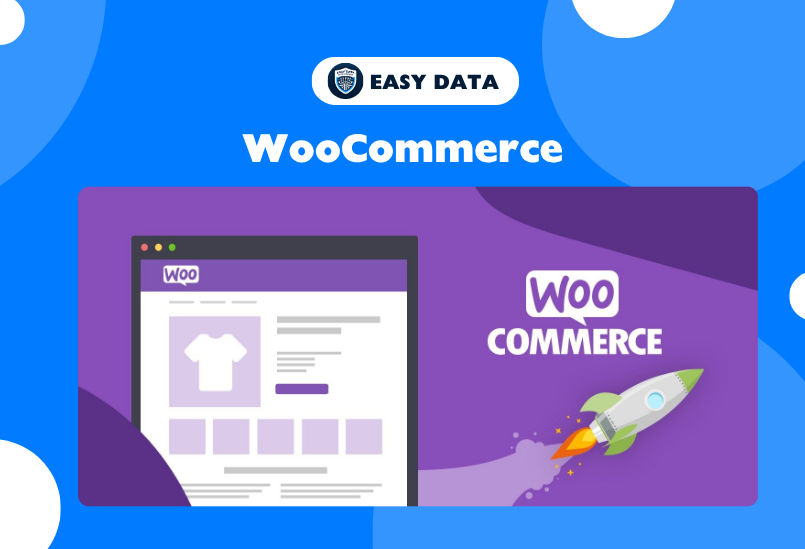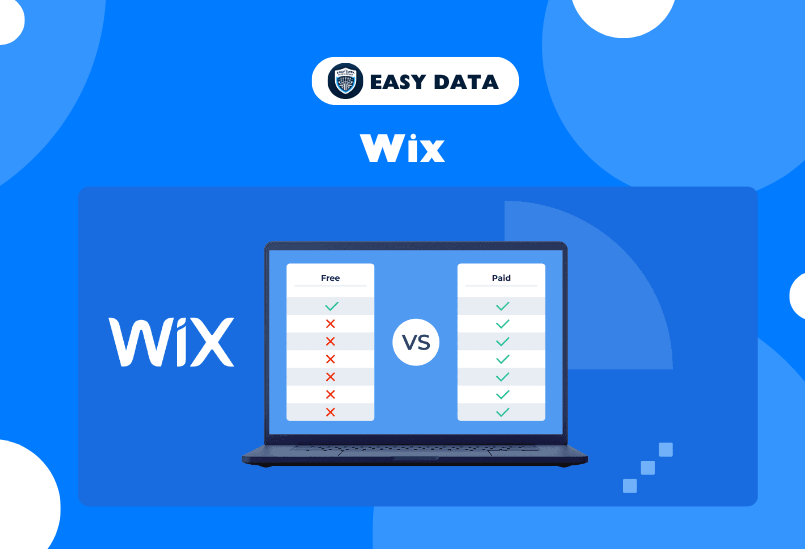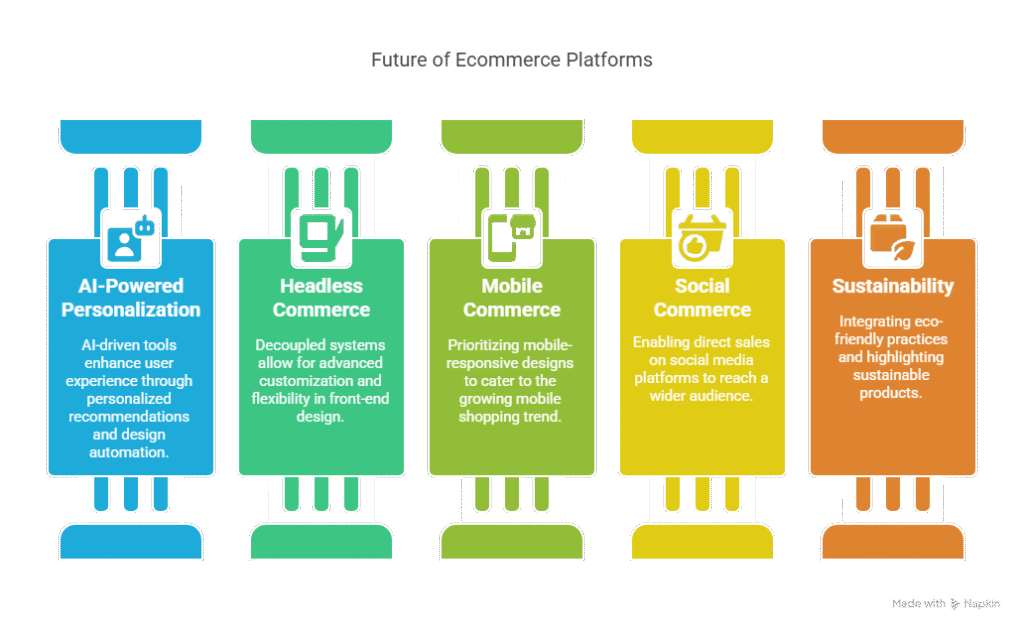In the rapidly evolving digital landscape of 2025, choosing the best ecommerce platform is critical for businesses aiming to establish a robust online presence. With global ecommerce sales projected to exceed $7 trillion by 2025, selecting the right platform can make or break your online store’s success. Whether you’re a small business owner, an entrepreneur launching a startup, or an established enterprise scaling operations, the right ecommerce platform empowers you to create a seamless e commerce website design, streamline operations, and drive sales. This article explores the top 5 ecommerce platforms, diving into their features, benefits, and how they cater to e commerce site development needs. We’ll also provide insights into platforms for ecommerce, online ecommerce platforms, and the most popular ecommerce platforms to help you make an informed decision.
For businesses seeking advanced data solutions to enhance their ecommerce strategies, explore our comprehensive ecommerce data services to gain a competitive edge.
- Why Choosing the Right Ecommerce Platform Matters
- 1. Shopify: The All-in-One Ecommerce Powerhouse
- 2. WooCommerce: The Flexible WordPress Solution
- 3. BigCommerce: The Scalable Enterprise Solution
- 4. Wix: The Beginner-Friendly Website Builder
- 5. Squarespace: The Design-Centric Ecommerce Platform
- Comparing the Top 5 Ecommerce Platforms
- Key Considerations for Choosing an Ecommerce Platform
- Emerging Trends in Ecommerce Platforms for 2025
- How to Get Started with Your Ecommerce Platform
- Conclusion
Why Choosing the Right Ecommerce Platform Matters?
The best ecommerce platform is more than just a tool to sell products online; it’s the backbone of your digital storefront. A well-designed platform simplifies e commerce website design, enhances user experience, and integrates seamlessly with marketing, payment, and analytics tools. With the rise of mobile shopping and increasing consumer expectations for fast, secure, and personalized experiences, e commerce site development demands platforms that are user-friendly, scalable, and feature-rich.
Key factors to consider when selecting an ecommerce platform include:
- Ease of Use: Intuitive interfaces for non-technical users.
- Customization: Flexibility to design e commerce website that aligns with your brand.
- Scalability: Ability to handle growth in products, traffic, and sales.
- Integrations: Compatibility with payment gateways, marketing tools, and analytics.
- Cost: Balancing features with affordability for small to large businesses.
- SEO Features: Tools to optimize your store for search engines.
- Security: Robust measures to protect customer data and transactions.
Below, we dive into the top 5 ecommerce platforms for 2025, analyzing their strengths, weaknesses, and suitability for various business needs.
1. Shopify: The All-in-One Ecommerce Powerhouse
Shopify is widely regarded as one of the most popular ecommerce platforms in 2025, powering over four million online stores globally. Its user-friendly interface, extensive app ecosystem, and scalability make it a top choice for businesses of all sizes, from startups to enterprise-level retailers.
Key Features of Shopify

- Ease of Use: Shopify’s drag-and-drop builder simplifies e commerce website design, allowing users to create professional storefronts without coding expertise.
- App Marketplace: With over 6,000 apps, Shopify supports integrations for dropshipping, marketing, and analytics, making it one of the most versatile platforms for ecommerce.
- Scalability: Shopify Plus caters to high-volume businesses, while the Starter plan ($5/month) suits small sellers focused on social commerce.
- Payment Processing: Shopify Payments integrates seamlessly, supporting over 100 payment gateways, including PayPal and Stripe.
- SEO Tools: Built-in features like customizable URLs, meta tags, and sitemaps enhance search engine visibility.
- Mobile Optimization: Fully responsive themes ensure a seamless mobile shopping experience.
Pros
- Intuitive interface for beginners and advanced users.
- Extensive theme library (100+ free and premium options).
- Robust support for multichannel selling (e.g., Amazon, Facebook, Instagram).
- 24/7 customer support via chat, email, and phone.
Cons
- Transaction fees apply unless using Shopify Payments.
- Limited SEO customization compared to open-source platforms.
- Additional app costs can increase expenses.
Pricing
- Starter: $5/month (social media selling, no full website).
- Basic: $29/month.
- Shopify: $79/month.
- Advanced: $299/month.
- Shopify Plus: Starting at $2,300/month for enterprises.
Best For
Shopify is ideal for businesses seeking a balance of ease of use, scalability, and robust features. It’s perfect for small to medium businesses and dropshippers looking to leverage its app ecosystem for e commerce site development.
2. WooCommerce: The Flexible WordPress Solution
WooCommerce, a free plugin for WordPress, is a favorite among businesses that already use WordPress for their websites. As an open-source platform, it offers unparalleled flexibility for design e commerce website, making it one of the most popular ecommerce platforms for those comfortable with customization.
Key Features of WooCommerce

- Open-Source Flexibility: Full access to code allows extensive customization for unique e commerce website design.
- WordPress Integration: Seamlessly integrates with WordPress themes and plugins, ideal for businesses with existing WordPress sites.
- Extensive Extensions: Thousands of free and paid extensions for payments, shipping, and marketing.
- Scalability: Suitable for small stores to large enterprises with proper hosting.
- SEO Advantage: Leverages WordPress’s robust SEO capabilities, including Yoast SEO integration.
Pros
- Free core plugin reduces initial costs.
- Highly customizable for tailored e commerce site development.
- Large community and developer support.
- Native POS and mobile app for order management.
Cons
- Requires WordPress hosting and maintenance, adding to costs.
- Steeper learning curve for non-technical users.
- Performance depends on hosting quality.
Pricing
- Core Plugin: Free.
- Hosting: $5–$50/month (varies by provider).
- Extensions: $0–$200+/year for premium plugins.
- Themes: $0–$100+ for premium themes.
Best For
WooCommerce is best for businesses with WordPress experience or those needing extensive customization. It’s ideal for bloggers, small businesses, and enterprises prioritizing e commerce website design flexibility.
3. BigCommerce: The Scalable Enterprise Solution
BigCommerce is a leading SaaS platform known for its scalability and robust feature set, making it one of the top 5 ecommerce platforms for businesses aiming to grow. Its enterprise-grade tools and lack of transaction fees make it a strong contender for online ecommerce platforms.
Key Features of BigCommerce

- Scalability: Supports unlimited products, bandwidth, and staff accounts.
- No Transaction Fees: Unlike Shopify, BigCommerce doesn’t charge extra for third-party payment gateways.
- Built-in Features: Advanced SEO tools, abandoned cart recovery, and multi-currency support are included in all plans.
- Headless Commerce: Allows decoupling of front-end and back-end for advanced e commerce website design.
- Integrations: Partners with tools like Google Shopping, Mailchimp, and QuickBooks.
Pros
- Comprehensive built-in features reduce reliance on apps.
- Strong B2B and B2C capabilities.
- Excellent for international selling with multi-currency support.
- 24/7 support and dedicated enterprise teams.
Cons
- Complex interface for beginners.
- Limited theme selection compared to Shopify.
- Higher pricing for advanced plans.
Pricing
- Standard: $29.95/month.
- Plus: $79.95/month.
- Pro: $299.95/month.
- Enterprise: Custom pricing.
Best For
BigCommerce is perfect for businesses focused on scalability and international expansion. It’s a top choice for medium to large businesses and those exploring headless ecommerce for advanced customization.
4. Wix: The Beginner-Friendly Website Builder
Wix is a versatile website builder with robust ecommerce capabilities, making it one of the best ecommerce platforms for small businesses and creatives. Its drag-and-drop editor simplifies e commerce website design, and its affordability appeals to budget-conscious entrepreneurs.

Key Features of Wix
- Drag-and-Drop Editor: Intuitive interface for creating unique e commerce website design without coding.
- Multi-Channel Selling: Integrates with Amazon, Facebook, and Instagram.
- Built-in Marketing Tools: Includes email campaigns, social post creation, and Google Analytics integration.
- Mobile Optimization: Over 500 mobile-responsive templates.
- App Market: Hundreds of apps for added functionality, such as live chat and bookings.
Pros
- Highly user-friendly for beginners.
- Affordable pricing with no transaction fees on ecommerce plans.
- Built-in tools for logo creation and marketing.
- Free plan available for testing.
Cons
- Limited scalability for large businesses.
- Template changes require rebuilding the site.
- Advanced features require higher-tier plans.
Pricing
- Light: $17/month (no ecommerce).
- Core: $29/month.
- Business: $36/month.
- Business Elite: $159/month.
Best For
Wix is ideal for small businesses, restaurants, and service-based businesses looking for an easy-to-use platform for e commerce site development. It’s perfect for those prioritizing design and affordability.
5. Squarespace: The Design-Centric Ecommerce Platform
Squarespace is renowned for its stunning templates and user-friendly interface, making it a top pick for design-focused businesses. Its ecommerce tools have improved significantly, positioning it among the top 5 ecommerce platforms for 2025.

Key Features of Squarespace
- Stunning Templates: Over 100 professionally designed, mobile-responsive templates.
- Acuity Scheduling: Built-in tool for booking and service-based businesses.
- AI Features: Blueprint AI assists in e commerce website design with guided support.
- Marketing Tools: Includes SEO features, email marketing, and social media integrations.
- Inventory Management: Supports subscriptions, gift cards, and product reviews.
Pros
- Beautiful, modern templates for design e commerce website.
- No transaction fees on Commerce plans.
- Intuitive drag-and-drop editor.
- Built-in analytics for performance tracking.
Cons
- Limited multichannel selling capabilities.
- Slower site speeds compared to competitors.
- Advanced features require higher-tier plans.
Pricing
- Personal: $16/month (no ecommerce).
- Business: $23/month (3% transaction fee).
- Commerce Basic: $28/month.
- Commerce Advanced: $52/month.
Best For
Squarespace is ideal for creatives, small businesses, and service providers who prioritize aesthetics in e commerce website design. It’s less suited for large-scale retailers needing advanced scalability.
Comparing the Top 5 Ecommerce Platforms
| Platform | Best For | Starting Price | Key Strength | Key Weakness |
|---|---|---|---|---|
| Shopify | Scalable businesses, dropshipping | $5/month | App ecosystem, ease of use | Transaction fees without Shopify Payments |
| WooCommerce | WordPress users, customization | Free (plus hosting) | Flexibility, SEO capabilities | Requires technical knowledge |
| BigCommerce | Enterprises, international selling | $29.95/month | Scalability, no transaction fees | Complex interface |
| Wix | Small businesses, beginners | $29/month | User-friendly, affordable | Limited scalability |
| Squarespace | Design-focused businesses | $28/month | Stunning templates, ease of use | Limited multichannel selling |
Key Considerations for Choosing an Ecommerce Platform
Selecting the best ecommerce platform depends on your business’s unique needs. Here are critical factors to evaluate:
-
Business Size and Goals:
- Small businesses benefit from Wix and Squarespace for affordability and ease of use.
- Medium to large businesses should consider Shopify or BigCommerce for scalability.
- Enterprises with complex needs may prefer Adobe Commerce or BigCommerce.
-
Budget:
- Free or low-cost options like WooCommerce and Square Online suit startups.
- Premium platforms like Shopify and BigCommerce offer more features but at higher costs.
-
Technical Expertise:
- Non-technical users thrive with Wix, Squarespace, or Shopify’s drag-and-drop builders.
- Developers or businesses with technical teams can leverage WooCommerce or Adobe Commerce.
-
Customization Needs:
- For unique e commerce website design, WooCommerce and Adobe Commerce offer extensive customization.
- Shopify and BigCommerce balance ease of use with moderate customization.
-
Sales Channels:
- Shopify and Wix excel in multichannel selling (e.g., social media, marketplaces).
- Squarespace lags in direct marketplace integrations.
-
SEO and Marketing:
- WooCommerce and Shopify offer robust SEO tools.
- Wix and Squarespace include built-in marketing tools like email campaigns.
For businesses looking to enhance their ecommerce strategies with data-driven insights, our ecommerce data services provide tools for competitor analysis, pricing strategies, and market trends.
🚀 Explore Our E-commerce Data Services
Click to discover real-time crawling solutions for Shopee, TikTok Shop, and Lazada.
Emerging Trends in Ecommerce Platforms for 2025
The ecommerce landscape is evolving rapidly, with ecommerce software companies introducing innovative features to meet consumer demands. Key trends include:

- AI-Powered Personalization: Platforms like Shopify and Squarespace use AI for product recommendations and e commerce website design automation.
- Headless Commerce: BigCommerce and Adobe Commerce support decoupled front-end and back-end systems for advanced customization.
- Mobile Commerce: With mobile shopping accounting for over 50% of ecommerce sales, platforms prioritize mobile-responsive designs.
- Social Commerce: Shopify, Wix, and Ecwid enable selling directly on social media platforms like Instagram and Facebook.
- Sustainability: Platforms are integrating tools to highlight eco-friendly products and practices.
How to Get Started with Your Ecommerce Platform

- Define Your Needs: Identify your product types, target audience, and growth goals.
- Test Free Trials: Most platforms offer 14-day trials to explore features.
- Plan Your Budget: Factor in platform fees, hosting, apps, and transaction costs.
- Design Your Store: Use templates or hire a designer for e commerce website design.
- Integrate Tools: Set up payment gateways, marketing tools, and analytics.
- Optimize for SEO: Use built-in SEO tools to improve search visibility.
- Launch and Monitor: Track performance with analytics and refine your strategy.
For advanced analytics and competitive insights, leverage our ecommerce data services to stay ahead in the market.
Conclusion
Choosing the best ecommerce platform in 2025 requires balancing ease of use, scalability, customization, and cost. Shopify leads for its all-in-one capabilities and app ecosystem, making it ideal for most businesses. WooCommerce offers unmatched flexibility for WordPress users, while BigCommerce excels in scalability and enterprise features. Wix and Squarespace cater to beginners and design-focused businesses, respectively. By evaluating your business needs and leveraging the right platforms for ecommerce, you can create a successful online store that drives growth and customer satisfaction.
To supercharge your ecommerce strategy with data-driven insights, explore our ecommerce data services and take your online store to the next level.
📥 Want to see real data in action?
Book a free demo with our team to get data samples, pricing, and technical consultation tailored to your use case.
Book a Demo Now

Leave a Reply